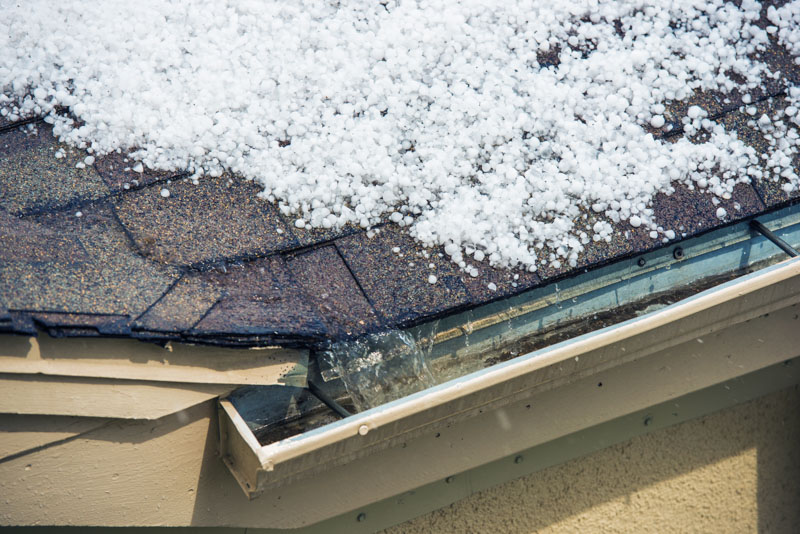When consumers think of metal roofs, they often picture beat-up old galvanized metal on outdoor buildings.

Modern residential metal roofs are much more durable and attractive than the metal roof on your grandparents’ shed. The materials can withstand heavy winds, rain, and hail better than traditional shingled roofs. Additionally, metal roofs insulate against noise and reduce sounds more effectively than traditional counterparts.
In This Article
Hail-Proof Metal Roofs
Metal roofs weren’t always hail-proof. The early roof varieties had problems of dents, scratches, and noise. Modern roof designs have implemented resistant materials and coatings to prevent damage from inclement weather. Many metal roofing materials rate higher for hail resistance than shingled asphalt roofs. Insurance companies accept these studies and often offer reduced rates for homes with metal roofs.
The durability of metal roofs comes from a combination of galvanized metal and impenetrable coatings. Most metal roofs installed nowadays include a UL 2218 Class IV Impact Resistance rating, the highest available. To pass this test, materials must survive a hit by a two-inch steel ball dropped from 20 feet in the air without splitting. Erie Home’s metal shingle product boasts a Class 4 impact rating to withstand the most severe hailstorms.
Are All Metal Roofs Hail Resistant?
Of course, having a metal roof on your home doesn’t guarantee that hail damage will be a thing of the past. Your roof’s ability to withstand hail will depend largely on the material from which it is made. This is because some metals are naturally softer than others, as well as the fact that some panels are made thinner than those of different kinds of metal.
Here’s a look at how several widely-used metals handle hail damage:
- Aluminum – The drawback of having a fully aluminum roof is that, in many cases, the panels are very thin—which makes it easier for heavy hail to damage and puncture the roof.
- Copper – Copper does resist hail damage better than some harder metals, but its softness makes it vulnerable to denting and warping after repeatedly being struck by hail.
- Steel – Thanks to its innate strength and durability, steel roofing tends to resist hail quite well.
- Zinc – Zinc is a flexible metal that makes for an effective roofing material in many cases, but its ability to resist hail damage depends greatly on the roof’s panel design and thickness.
Shingled Roofs and Hail Damage
Much of the hail damage to traditional roofs comes from water. Dents often form on shingles from impact, knocking off surface granules. The result is unprotected roofing, prone to water damage. With reduced coverage, water seeps under the shingles and enters the wood underneath. Mold, fungus, and algae can result, causing thousands of dollars in damage.
Metal roofs are not only resistant to dents but can prevent water damage from occurring. Water doesn’t have the ability to seep through metal. Instead, water left by hail will slide down the roof into the gutter, eventually making its way to the ground.
All-Around Weather Protection
Metal roofs, particularly stone coated metal shingles, are better designed to handle inclement weather conditions. In addition to hail, metal roofs withstand wind, snow, and ice. Materials used to construct metal roofs encourage water to flow off the roof to prevent water damage. If you live in a region with frequent adverse weather conditions, metal roofing may be a good option.
With a metal roof installed by Erie Home, you can not only count on top-caliber weather protection for your home, but also our limited lifetime transferable warranty to protect the roof itself. If you think a metal roof can give you more peace of mind during nasty hail storms or other inclement weather events, don’t hesitate to discuss specifics about your local weather climate with one of our metal roofing experts. He or she can provide you with an honest assessment and recommend a roof to best suit your needs.
